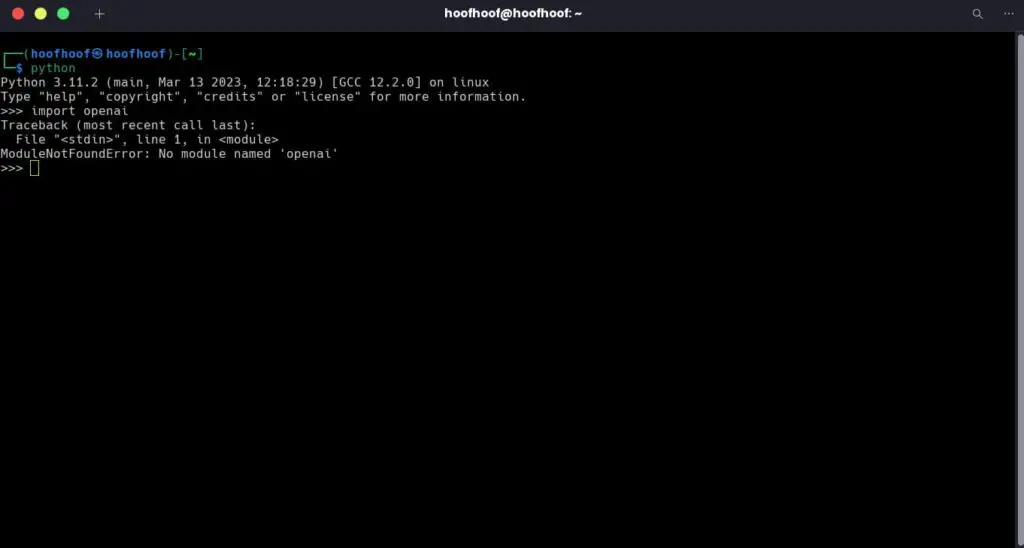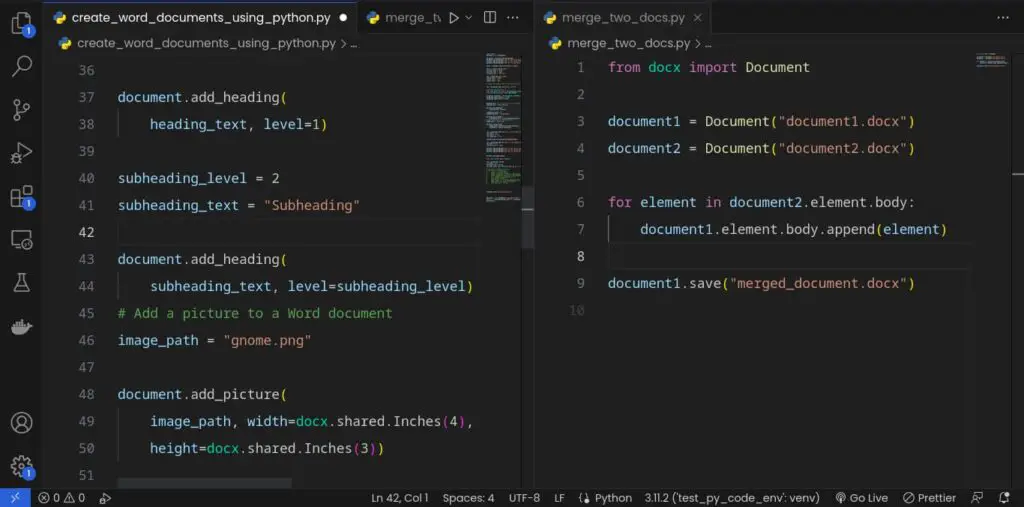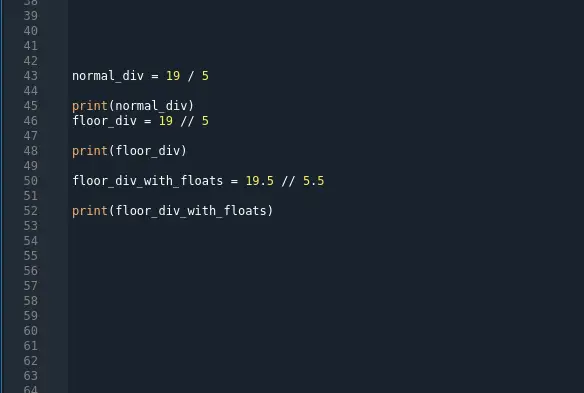There you are; browsing through a learning material and right into your face is the “for i in range” code snippet.
What does it mean?
Well,
for i in range is a syntax followed in Python programming language to create a loop, specifically a for loop iteration, that iterates over a sequence of numbers or a collection of items.
An iteration, in programming, goes through a collection of items or data, doing something in each current iteration step.
So, if you have a collection of 10 fruits, using the for i in range of 10 fruits, will go over each fruit starting at the first fruit and going all the way to fruit number 10.
The “range” function generates a sequence of numbers starting from 0 (by default) up to the specified value.
The loop assigns each value to the variable “i” in each iteration, allowing you to perform actions repeatedly.
It’s commonly used to execute a block of code a specific number of times or to iterate through a collection using indices.
For example, “for i in range(5):” will execute the code block five times, with “i” taking the values 0, 1, 2, 3, and 4 in each iteration.
Now that you know what an iteration is, let’s go over each keyword used in the for i in range loop.
Here is a breakdown of the different keywords used in the “for i in range” loop in Python:
- for: “for” is the keyword that marks the beginning of a loop. It indicates that we are about to start a loop that will iterate over a sequence of items.
- i: “i” is a variable name that represents the current item in each iteration. You can choose any valid variable name you prefer. It is commonly used as a short form of “index” or “item.” More about i variable in Python in this article: What does i in Python mean?
- in: “in” is a keyword that separates the loop variable (in this case, “i”) from the sequence or range that the loop will iterate over.
- range: “range” is a built-in Python function that generates a sequence of numbers. It takes in parameters to specify the start, end, and step value (optional) of the sequence. In the “for i in range” loop, it provides the sequence of numbers for the loop to iterate over.
- Colon: The colon “:” at the end of the line is essential in Python syntax. It signifies the beginning of a code block that will be executed repeatedly in each iteration of the loop.
To summarize, the full syntax of a Python loop using “for i in range” is:
for i in range(start, end, step):
# Code block to be executed in each iteration
Notice the comment: “ # Code block to be executed in each iteration “.
The for in in range: loop syntax in Python is not complete.
To ensure the completeness of the “for i in range” loop syntax in Python, it is necessary to include code inside the iteration, as omitting it may lead to Python raising exception errors.
One of the options you have is to:
1. Do nothing by using the pass keyword:
In certain situations, you may not require any action to be performed within the loop.
In such cases, you can simply use the “pass” keyword to indicate that no code should be executed.
Here’s an example:
for i in range(5):
pass
OR
2. Do something:
If you want to execute specific code during each iteration, you can include the desired actions within the “for i in range” block.
This allows you to perform a variety of tasks.
Some of these tasks include:
- Printing something
- Do a conditional check
- Add additional nested loops
a) Print something:
You can use the print statement to display information or intermediate results during each iteration.
Example:
for i in range(3):
print("Current value of i:", i)b) Check a condition:
You can include an if statement inside the loop to evaluate a condition and perform specific actions based on the condition’s result.
Example:
for i in range(5):
if i % 2 == 0:
print(i, "is even")
else:
print(i, "is odd")
c) Create Nested loops:
When working with complex data structures like lists or dictionaries, you can use nested loops to iterate over each element or item within them.
Example:
fruits = ["apple", "banana", "orange"]
colors = ["red", "yellow", "orange"]
for fruit in fruits:
for color in colors:
print(fruit, "is", color)
In the example above, we have a list of fruits and a list of colors.
The nested loop goes through each fruit and pairs it with every color, producing combinations like “apple is red,” “banana is yellow,” and so on.
Remember, these are just a few examples of what you can do inside a “for i in range” loop.
You can perform various operations and utilize different functionalities based on your specific programming needs.
Let’s look at some of the reasons why you would use a for loop in Python.
Why do we use for i in Python?
The “for i” loop in Python is a fundamental construct that allows us to iterate over a sequence of items or perform a set of actions repeatedly.
It provides a convenient and efficient way to automate tasks, process data, and work with collections.
Let’s explore some key reasons why the “for i” loop is important in Python:
- Iterating over a sequence
- Performing a fixed number of iterations
- Accessing indices and values in a collection
- Creating nested iterations
- Performing conditional operations
1. Iterating over a sequence
With the “for i” loop, we can easily iterate over a sequence of elements, such as a list, tuple, or string.
This enables us to access each item individually and perform operations or computations on them.
An example of this is:
fruits = ["apple", "banana", "orange"]
for fruit in fruits:
print(fruit)
2. Performing a fixed number of iterations
Using the “for i in range” variation of the loop, we can execute a block of code a specific number of times.
This is particularly useful when we need to repeat an action for a known number of iterations.
For example:
Think of an automated teller machine that calls out each customer a number of times before moving on to the next one.
You can limit the calls to fives by using a for i in range loop like this:
import time
for i in range(5):
print("Iteration:", i)
time.sleep(10)Only after calling the customer while waiting for 10 seconds for a response will such a program call out the next customer.
This is just a simple example to illustrate where using a for loop to go over something a number of times can be implemented.
3. Accessing indices and values
The “for i in range” loop allows us to work with indices and values simultaneously.
It provides access to both the index and the corresponding value in each iteration, enabling us to manipulate data based on their positions.
For example:
fruits = ["apple", "banana", "orange"]
for index, fruit in enumerate(fruits):
print("Index:", index, "Fruit:", fruit)
Here, we are accessing the index of each fruit while showing the fruit name to the user.
4. Creating nested loops
The “for i” loop supports nested iterations, allowing us to iterate over multiple collections or perform complex operations.
This is especially beneficial when working with nested data structures like lists of lists or dictionaries.
An example:
matrix = [[1, 2, 3], [4, 5, 6], [7, 8, 9]]
for row in matrix:
for element in row:
print(element)
5. for loops can be beneficial when performing conditional checks
We can incorporate conditional statements, such as “if” or “elif,” within the “for i” loop to perform actions based on specific conditions.
This enables us to control the flow of execution and handle different scenarios effectively.
An example with a Python code is:
numbers = [1, 2, 3, 4, 5]
for number in numbers:
if number % 2 == 0:
print(number, "is even")
else:
print(number, "is odd")
Overall, the “for i” loop is an essential construct in Python that empowers us to iterate, process, and manipulate data in a controlled and efficient manner.
FAQs
What sequence is generated by range(1, 10, 3)?
The sequence generated by range(1, 10, 3) is [1, 4, 7]. The range function generates a sequence of numbers starting from the first parameter (inclusive) up to the second parameter (exclusive), with a step value defined by the third parameter. In this case, it starts at 1, increments by 3, and stops before reaching 10. The resulting sequence consists of 1, 4, and 7.
Does range work with floats in Python?
The range function in Python does not directly support floats. It is designed to generate a sequence of integers. When using range, the start, end, and step values must be integers. If you pass float values as arguments, Python will raise a TypeError: 'float' object cannot be interpreted as an integer indicating that floats are not valid arguments for range.
That’s it for this article.
Create, inspire, repeat!







